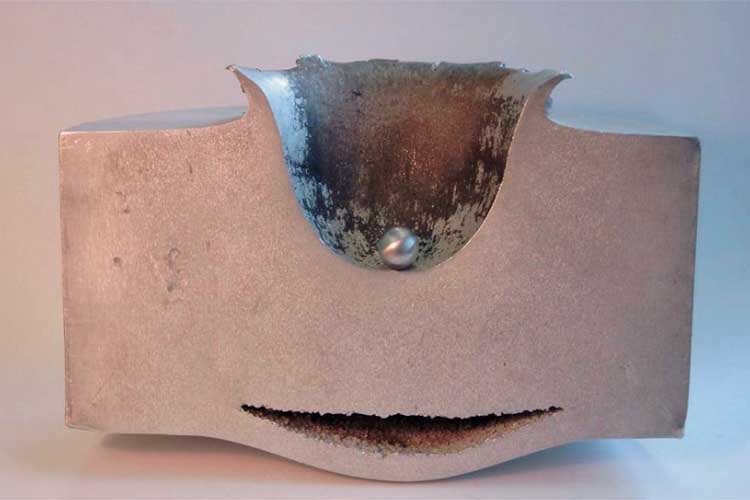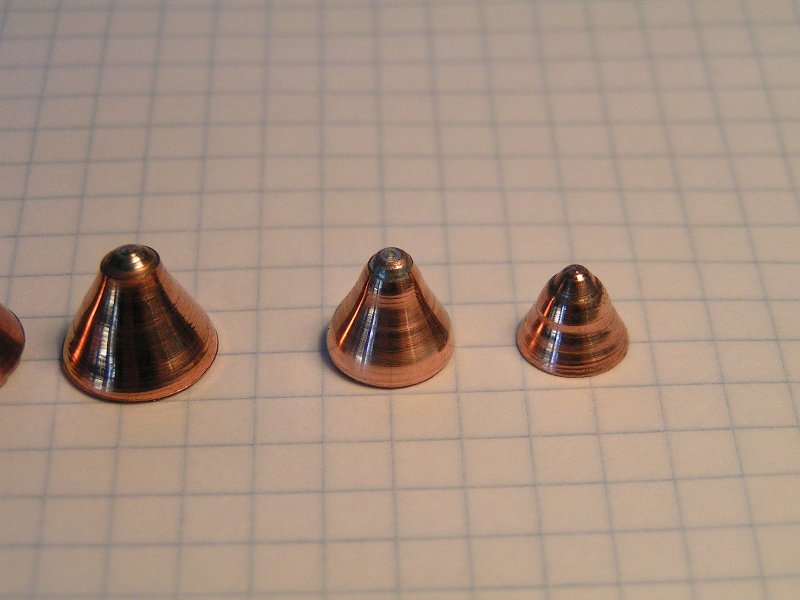Oh well, guess that means we can roll out millions(billions?) of dollars worth of research and the bastards can destroy us with super-sized Martini glasses.


 It was for Al/steel/Cu tubes but unsure what explosive was used, C4 or equivalent plastic explosive I think.
It was for Al/steel/Cu tubes but unsure what explosive was used, C4 or equivalent plastic explosive I think.| Quote: |
 I suppose you finished
all your research about the extremely interesting diaminofurazan derivatives... Have you ever thought about meltcasting some of your precious DNAF
into one of your bullet shaped charges?
I suppose you finished
all your research about the extremely interesting diaminofurazan derivatives... Have you ever thought about meltcasting some of your precious DNAF
into one of your bullet shaped charges? 




 )
)








 upon contact with the armour of a tank. This has apparently been necessitated by
the change in tactics that we've all seen in the current conflicts in the middle-east.
upon contact with the armour of a tank. This has apparently been necessitated by
the change in tactics that we've all seen in the current conflicts in the middle-east. 
 From: "Structure of a Shaped Jet Formed in an Oblique Collision of Flat Metal Plates by O. B. Drennov" It seems that jet formation is dependant very
much on two things at these small liner angles:
From: "Structure of a Shaped Jet Formed in an Oblique Collision of Flat Metal Plates by O. B. Drennov" It seems that jet formation is dependant very
much on two things at these small liner angles:


 - That'd be quite some fireworks show]
- That'd be quite some fireworks show] Although I seem to remember that higher temperatures only increases resistance...
Although I seem to remember that higher temperatures only increases resistance...

| Quote: |
 Ha, they'll be happy to know that perhaps our love of alcohol will be
our downfall.
Ha, they'll be happy to know that perhaps our love of alcohol will be
our downfall. 
| Quote: |




 I'm planning to try some copper lined
EFP's somewhere in the near future anyway. They won't be effective at very long-standoffs probably, but ok...
I'm planning to try some copper lined
EFP's somewhere in the near future anyway. They won't be effective at very long-standoffs probably, but ok...



| Quote: |
| Quote: |
| Quote: |
 They are used by NASA indeed to describe possible meteorite impacts on earth, but they also plan to shoot satellites directly into orbit
with much larger designs.
They are used by NASA indeed to describe possible meteorite impacts on earth, but they also plan to shoot satellites directly into orbit
with much larger designs. 






 I don't think the acceleration of the plates will be
affected by the fact that the two plates are connected by a hinge. Even when the two plates would be enterily seperated it shouldn't be a problem I
guess.
I don't think the acceleration of the plates will be
affected by the fact that the two plates are connected by a hinge. Even when the two plates would be enterily seperated it shouldn't be a problem I
guess. | Quote: |


| Quote: |
 In fact I have no idea how brass would perform under ideal
circumstances. It is a known fact however that most alloys perform not very well. My guess is that it performs even worse than aluminium...
In fact I have no idea how brass would perform under ideal
circumstances. It is a known fact however that most alloys perform not very well. My guess is that it performs even worse than aluminium...








| Quote: |



| Quote: |


 )
)
| Quote: |
| Quote: |

| Quote: |
 Going to try smaller ones with
cartridges and hollow bullets.
Going to try smaller ones with
cartridges and hollow bullets.  ) to make this and
allign it easily inside the charge.
) to make this and
allign it easily inside the charge. ) It penetrated the entire side of the steel block, which was 12 cm, and another 3 cm
into the ground...
) It penetrated the entire side of the steel block, which was 12 cm, and another 3 cm
into the ground...











 ) I had to put it pretty near one of the holes on the corner of the block. The sideway displacement of the steel ruptered the steel into an
opening about 5 cm after the entrance, which gave a perfect opportunity to lighten and thus photograph the inside of the penetration channel. This
rupture can be seen on the photo on the right, at the top of the picture on the right...
) I had to put it pretty near one of the holes on the corner of the block. The sideway displacement of the steel ruptered the steel into an
opening about 5 cm after the entrance, which gave a perfect opportunity to lighten and thus photograph the inside of the penetration channel. This
rupture can be seen on the photo on the right, at the top of the picture on the right... 
 )
)| Quote: |


| Quote: |
 Take a thin strand of steelwool and put it between mandrel and liner, while you press the liner against the mandrel by hand. (with the strand of
steelwool in between) This does sand down the mandrel as well but it can be reshaped very fast with a large straight blade chisel. (Take care not to
touch the spinning mandrel with the chisel while it spins towards the chisel blade, it tends to ruin your mandrel and make your chisel stick into the
ceiling
Take a thin strand of steelwool and put it between mandrel and liner, while you press the liner against the mandrel by hand. (with the strand of
steelwool in between) This does sand down the mandrel as well but it can be reshaped very fast with a large straight blade chisel. (Take care not to
touch the spinning mandrel with the chisel while it spins towards the chisel blade, it tends to ruin your mandrel and make your chisel stick into the
ceiling  )
)







| Quote: |